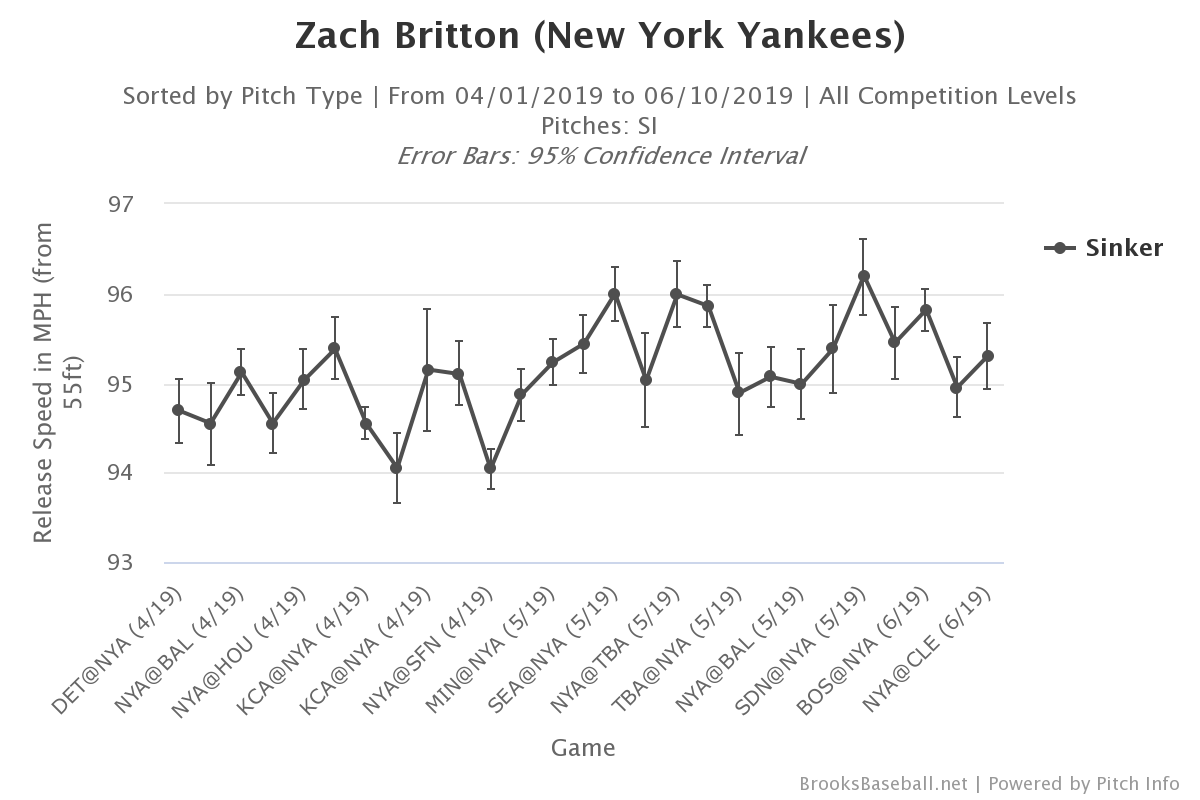Zack Britton’s Improved Sinker is Driving His Recent Success
When the Yankees re-signed Zack Britton as a free agent during this past offseason, there were some questioning if it made sense to bring back a 31-year-old reliever whose best days looked well behind him. Britton was good for the Yankees after being acquired from the Orioles in July 2018, posting a 2.88 ERA in 25 appearances, but his fielding-independent measures left more to be desired with a 4.08 FIP and lower strikeout numbers than what he posted during his dominant 2015 and 2016 seasons, performances that saw him emerge as the best relief pitcher in baseball.
Britton got off to a slow start in 2019, raising more questions about his long-term status and the Yankees’ decision to give him a large contract. He ended April with a 3.00 ERA, but his primary pitch, the sinker, did not have the same life on it that it did back in his prime years. The pitch sat mostly below 95 mph in April, and his FIP peaked at 3.93 on May 3rd, when he gave up two runs by issuing a walk and surrendering a home run in one inning against the Minnesota Twins. Since that point, Britton has issued five walks while striking out 12 in 16.1 innings and has only allowed three runs, coming courtesy of a Vladimir Guerrero Jr. home run on June 5th that was literally the first home run to be hit off a Britton sinker that was outside of the zone. That lone blemish aside, I noticed that his sinker has returned closer to its peak during this stretch, likely the best its been while Britton has worn a Yankees uniform.
To show that I am not making this up, here is a chart showing the average velocity of Britton’s sinker in every game this season:

According to Brooks Baseball, since his outing against the Giants on April 26th (in which he issued three walks), there has been an increase in average velocity each outing before a couple of drop-offs, but it has consistently been at around 95 mph and has averaged 96 multiple times since. The recent Vlad Jr. hiccup skews some of the numbers a bit, but during this period, Britton saw his ERA and FIP drop to their lowest marks of the season at 2.05 and 3.00 respectively before rising again after that June 5th game against Toronto. His strikeout rate also has risen to 22.3%, the best mark for Britton since his remarkable 2016 season. Also according to Brooks Baseball, the 95.52 average sinker velocity he recorded in May 2019 is the highest for Britton in a single month since September 2017. These are all good signs that suggest Britton’s progress in his road back to being an elite reliever. Read the rest of this entry »
